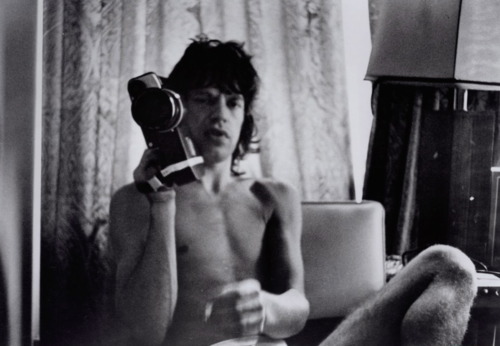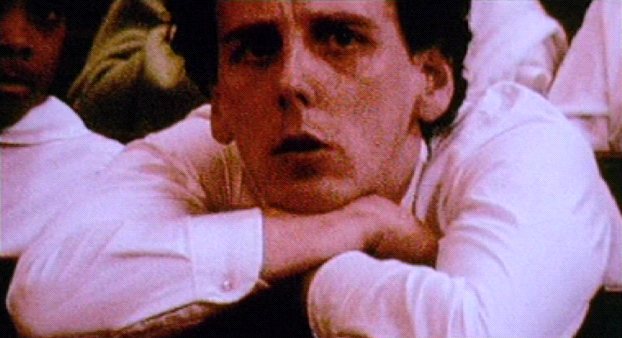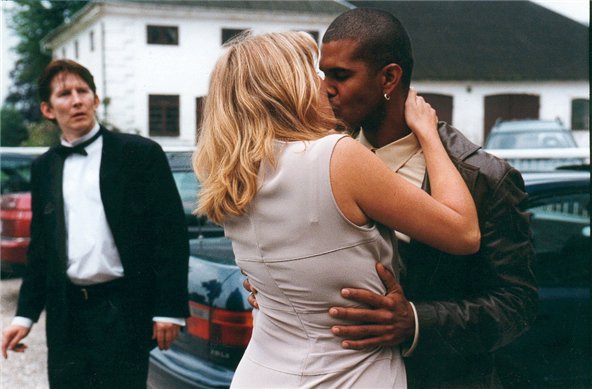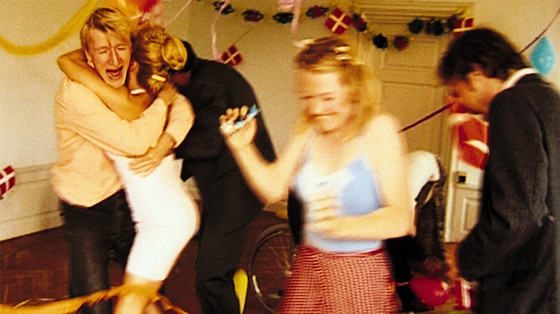8. Cocksucker Blues (1972)
Robert Frank directed this rare documentary following the Rolling Stones through their American tour in 1972. Several cameras were made available for any subject involved to pick up and start shooting. The film was unapologetically shameless including scenes of the band members doing drugs and even a groupie injecting heroin in a hotel room. The crassness of this film is what made it relevant and the brashness of the Rolling Stones allowed them to live up to their reputation.
Best Shaky Shot: Roadies on a plane with the Stones as they pick up girls and throw them over their shoulders and continue to carry on in this manner. The groupies don’t object and neither do the Stones as they look on gleefully.
7. Julien Donkey-Boy (1999)
Harmony Korine was one of the few American Directors to make a contribution to the Dogme 95 movement. “Julien Donkey-Boy” is a manic collection of characters and imagery beautifully crafted together manifesting in a melodious narrative. The viewer is brought into the life of gold grill bearing Julien, a man suffering from schizophrenia, and his dysfunctional family. Korine masterfully managed the camera to create and atmosphere of disorientation relating us to Julien and his mindset.
Best Shaky Shot: Victor Varnado singing “I’m a black albino straight from Alabama” over and over and over again.
6. Don’t Look Back (1967)
Director D.A. Pennebaker follows around Bob Dylan on his 1965 England tour. This amazing documentary give us amazing performances from Dylan (both on stage and in other places like in his hotel room) and a rare look into the young genius who was only in his early twenties when the film was shot.
Among some of the memorable cameos in the movie include Joan Baez (who was in a relationship with Dylan at the time), Allen Ginsberg, Alan Price and Donovan. This film is a must see even if you aren’t a Dylan. Pennebaker did a remarkable job of capturing side of the young artist that was not exposed to the public making it a truly intimate film both visually and in subject.
Best Shaky Shot: The opening sequence has Dylan holding up cards that read the song lyrics to “Subterranean Homesick Blues” as the song is played.
5. Inland Empire (2006)
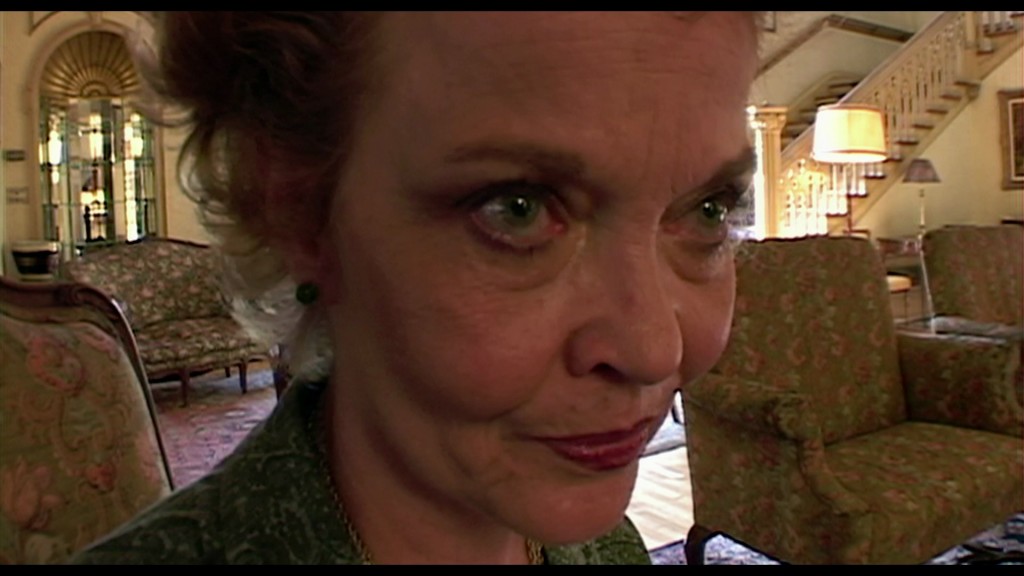
After making a statement that he will no longer use film, David Lynch shot the bizarre and impossible to follow “Inland Empire” completely on digital video. We are given some steady scenes but Lynch used an interesting technique throughout most of the movie. He used the camera in a way that mimicked the movements of his actors.
This is different from the other scripted films on the list in the sense that this movie does not give the audience a “fake documentary” feel. The camera moves with the characters, not the person holding the camera. Lynch creates beauty in an incohesive nightmare of images taking the camera in and out of focus and using extreme and uncomfortable angles.
Best Shaky Shot: The epic finale which involves Laura Dern’s character, Sue, walking down Hollywood Boulevard and ultimately getting stabbed by the screwdriver she was carrying to protect herself. The camera follows Sue, her doppelganger, and prostitutes to name a few.
4. Scorpio Rising (1964)
With themes of the occult, biker gangs, drugs, and Nazism overlaid with pop music from the day, “Scorpio Rising” is a study into America in the 1960’s by highly acclaimed Avant-Garde director Kenneth Anger. A short film (at only about 28 minutes and can be watched on YouTube) composed of steady long shots, quick cuts to stock footage, hand held moments and no dialogue this films is a bizarre montage.
Best Shaky Shot: The bike race at the end where part of it is over laid with Little Peggy March’s “I Will Follow Him”. Imagery of Hitler, Biblical scenes, stills of the outline of a scorpion and cut into the film’s end.
3. The Celebration (1998)
Thomas Vinterberg (The Hunt) was the first director to accept the challenge of the Dogme manifesto (which he co-founded) and did so with “The Celebration”. In accordance with the Dogme rules, the movie was shot on video using a hand held Sony DCR-PC7E Handycam using standard Mini-DV cassettes. The film focuses on a tragically untraditional family celebrating their father’s 60th birthday party. The get-together is shattered by deep family secrets brought out by one of the sons. “The Celebration” is a torrid study into complicated family dynamics.
Best Shaky Shot: A distraught Christian (the eldest son) is picked up by the arms and thrown out of the party after accusing his father of sexually abusing him and his late sister Linda.
2. The Idiots (1998)
Lars Von Trier’s contribution to the Dogme movement is quite possible one of his best films. Unfortunately, this movie is incredible difficult to find especially since it was mostly released on VHS and rarely on DVD format. The story focuses on a group of friends who decides to act as though they have mental and physical disabilities to release themselves from a conservative, conventional, materialistic society.
Although it may have not been intentional, “The Idiots” feels like a “fake documentary” as we follow this group of people. As funny and weird, shocking yet on point, “The Idiots” is certainly required viewing. Fans and critics of Von Trier’s more recent work (“Antichrist” for example) should really take this film into consideration.
Best Shaky Shot: As the films ends, the friends are challenged to take their “idiotic” behavior into their personal lives. Only one member of the group, Karen, does this and a dinner with her family leads her to convulse and spit out her food.
1. Shadows (1959)
With limited release for many years and its very “anti-Hollywood” style, “Shadows” is a terribly unwatched film by the masses. Cassavetes shot the film on the streets of New York using a 16mm handheld camera. The films focuses on the “beat generation” and is very cool in style and mood but should not be brushed off as just a look in the youth of the day. Despite being only eighty-one minutes, “Shadows” is thoroughly rich with interesting characters (most of them non or first time actors) and a captivating plot.
Best Shaky Shot: The opening credits, which contain no dialogue, not only set the mood for the film but also for movement that Cassavetes work influenced upon this film’s release. We see an apartment that would make even the viewer feel claustrophobic and friends (white and black-keep in mind this was still widely considered taboo at the time) singing and drinking.
Author Bio: Madeline Scott was raised in Memphis, Tennessee but came to Baltimore in 2005 to study at Maryland Institute College of Art. Baltimore is now home to here where she currently works at a non profit assisting people with developmental disabilities. Whenever she can, Madeline goes to the Charles Theater to watch their weekly revival series.
